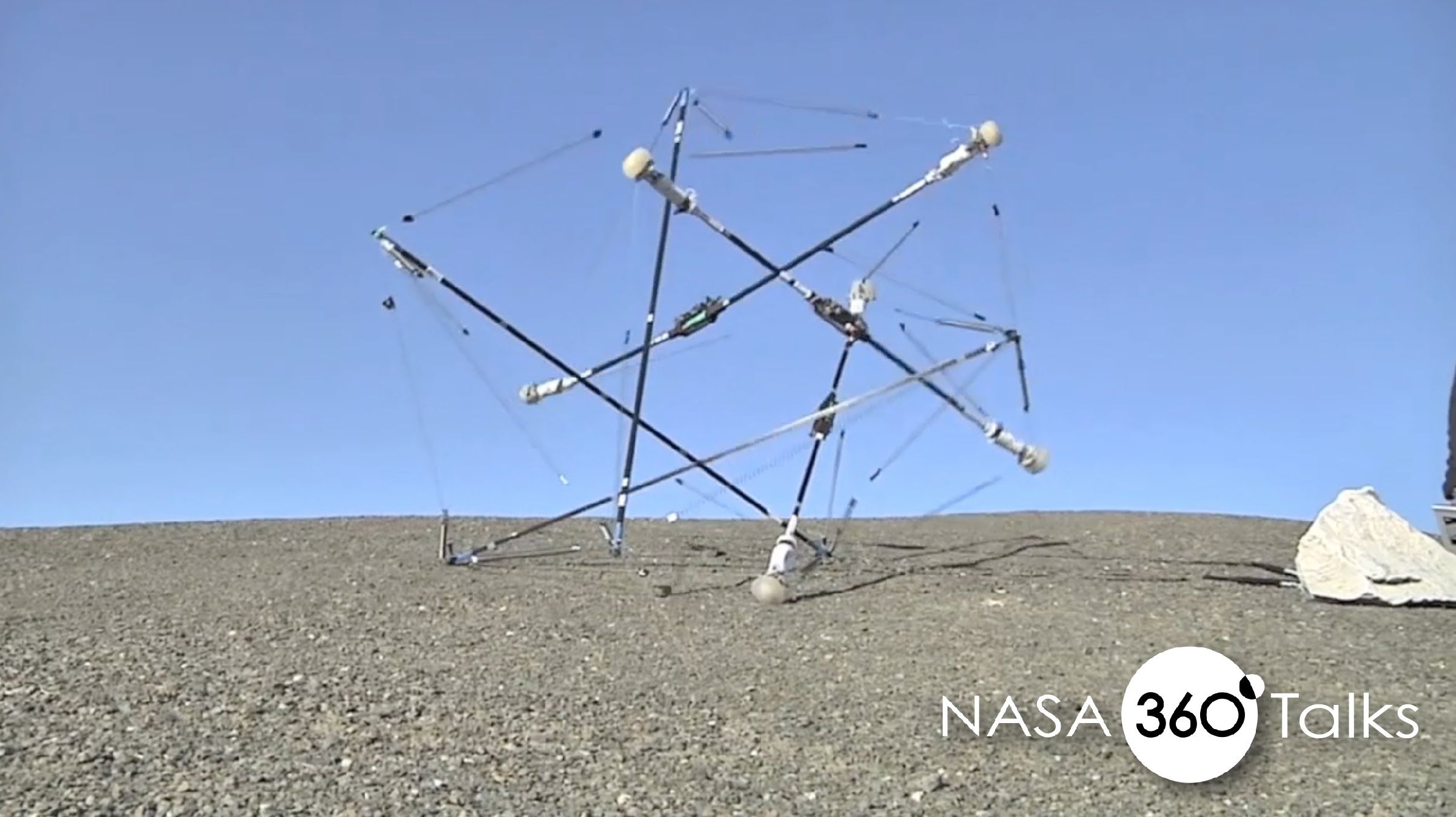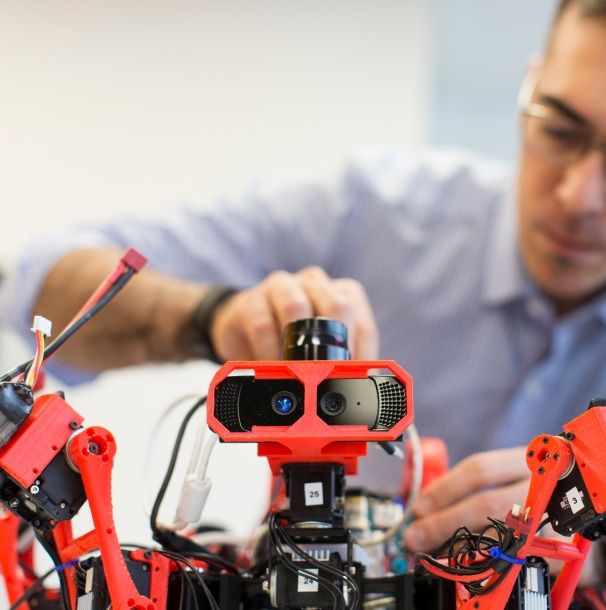Page 11588
Apr 23, 2016
Why messaging bots are a looming security threat
Posted by Karen Hurst in categories: robotics/AI, security
I almost snickered at this article because many of us have been highlighting many of the issues with AI. I am glad to see someone else also speaking up with the bigger issue with AI which is poor security due to the existing net infrastructure.
Facebook and others are all working on simplifying users’ lives with bots, but these novel interactive programs change the game in terms of security.
Apr 23, 2016
Siemens Research Team Develops Autonomous Mobile 3D Printing Spider-Bots
Posted by Karen Hurst in categories: 3D printing, business, engineering, robotics/AI
Good luck convincing business and consumers to buy your autonomous spider-bot.
There are a number of major tech-driven companies that are researching 3D printing technology at a rapid rate, but very few invest as much as time and money into additive manufacturing as Siemens does. Whether they’re building their own €21.4 million metal 3D printing facility or helping 3D printing startups with their endeavors, the global engineering company is betting big within the 3D printing industry. Now, a research team from Siemens Corporate Technology’s Princeton campus has just revealed their latest innovation, the development of autonomous mobile 3D printing devices, which are being called spider-bots.
These unique printing devices, which look like spider-like robots, were almost entirely designed and manufactured by the Siemens Corporate Technology research team. They’re engineered with an extruder similar to the type used with FDM printing, and are able to print in polylactic acid (PLA). The spider-bots are equipped with an onboard camera and a laser scanner as well, which enables them to become aware of the surrounding environment during the print job. Software-wise, they’re all programmed with a modified version of Siemens’ NX PLM software, which is their product development, engineering, and manufacturing software solution. In the near-future, the Siemens research team hopes to utilize these spider-bots within the automotive and aerospace industries.
Continue reading “Siemens Research Team Develops Autonomous Mobile 3D Printing Spider-Bots” »
Apr 23, 2016
Mom invents parent-assisted Upsee harness that enables children with disabilities to walk
Posted by Lily Graca in category: education
We’ve been saying for ages that parents are among the best problem-solvers in the world, and the story behind Upsee confirms it. When Debby Elnatan’s second son Rotem was diagnosed with cerebral palsy, an umbrella term for a group of neuromuscular movement disorders that develop before birth or early in childhood, she decided that the physical therapists’ recommendations for Rotem to remain seated for most of the day weren’t going to work for her son. She wanted her little boy to move and walk and experience the world from a different viewpoint. The rub: he needed Debby’s help… a lot of it. So she took the matter into her own hands and crafted a device that would allow him to move with her, safely encouraging independence and helping to develop his muscles. Upsee is the result of years of tinkering with Debby’s original harness design to make it more comfortable, user-friendly, and ultimately more beneficial for the children using it. The current version includes different harness colors, an adjustable hip belt for the adult, and double sandals that allow the parent to help guide their child’s feet, effectively teaching them the movements of walking. Debby estimates that the Upsee has been sold in 100 countries: think about all those kiddos who are getting the thrill of walking for the first time!
Apr 23, 2016
WTF Was That Thing Near the International Space Station?
Posted by Sean Brazell in categories: alien life, mathematics, media & arts, satellites
“The station regularly passes out of range of the Tracking and Relay Data Satellites (TDRS) used to send and receive video, voice and telemetry from the station,” a spokesperson for NASA told ValueWalk.
The only problem with this explanation, of course, is that it’s so much more boring…”
It is, of course, highly unlikely that this was some alien ship. That said, those tracking and relay stations are fixed and known locations. Also, the range and power of the ISS communication systems are well known, non-classified public domain knowledge. I suck at math, but it should only be a matter of taking the exact time and duration of this outage and comparing it to the tracking and relay station stats.
Continue reading “WTF Was That Thing Near the International Space Station?” »
Apr 23, 2016
CLICK HERE to support Bioo: Charge your Phone with the Power of a Plant
Posted by Klaus Baldauf in category: mobile phones
The world’s first plant pot that charges your phone with electricity from plants’ photosynthesis | Crowdfunding is a democratic way to support the fundraising needs of your community. Make a contribution today!
Apr 23, 2016
NASA Invests In Radical Game-Changing Concepts For Exploration
Posted by Klaus Baldauf in categories: robotics/AI, space

Every year, the NASA Innovative Advanced Concepts (NIAC) program puts out the call to the general public, hoping to find better or entirely new aerospace architectures, systems, or mission ideas. As part of the Space Technology Mission Directorate, this program has been in operation since 1998, serving as a high-level entry point to entrepreneurs, innovators and researchers who want to contribute to human space exploration.
This year, thirteen concepts were chosen for Phase I of the NIAC program, ranging from reprogrammed microorganisms for Mars, a two-dimensional spacecraft that could de-orbit space debris, an analog rover for extreme environments, a robot that turn asteroids into spacecraft, and a next-generation exoplanet hunter. These proposals were awarded $100,000 each for a nine month period to assess the feasibility of their concept.
Continue reading “NASA Invests In Radical Game-Changing Concepts For Exploration” »
Apr 23, 2016
Why sailing to the stars has suddenly become a realistic goal
Posted by Klaus Baldauf in categories: innovation, space
It takes a bold person to declare that interstellar travel is now within our grasp. Physicist Stephen Hawking has shown that he is just that, taking part in the Breakthrough Starshot initiative. The project has announced a $100m research programme to investigate the technology of using light to propel spacecraft out of the solar system to explore neighbouring stars.
For the first time in human history, interstellar travel is a realistic and achievable aspiration, and not just the playground of science fiction.
So what has changed that makes interstellar travel achievable? First of all, clear expectations. This is not about a great big spaceship with a colony of astronauts travelling for generations to settle a planet around a distant star. Neither is it about faster-than-light travel, tunnelling through wormholes to arrive at the other side of the universe in an instant of time. This is about technology that already exists, or nearly exists, being applied in new and exciting ways.
Continue reading “Why sailing to the stars has suddenly become a realistic goal” »
Apr 22, 2016
Faster Than Light! Incredible Illusion Makes Images ‘Time Travel’
Posted by Sean Brazell in categories: information science, particle physics, time travel
Using a weird phenomenon in which particles of light seem to travel at faster-than-light speeds, scientists have shown that waves of light can seem to travel backward in time.
The new experiment also shows other bizarre effects of light, such as pairs of images forming and annihilating each other.
Taken together, the results finally prove a century-old prediction made by British scientist and polymath Lord Rayleigh. The phenomenon, called time reversal, could allow researchers to develop ultra-high-speed cameras that can peer around corners and see through walls. [In Images: The World’s 11 Most Beautiful Equations].
Apr 22, 2016
Israeli Company Discovers Cure for Blocked Arteries
Posted by Shailesh Prasad in categories: biotech/medical, health
Israel’s Eximo has successfully completed a multicenter clinical trial of its laser system and unique catheters for treating peripheral artery disease, and after 100% successful Mexican and European trials it has now been approved by Israel’s Ministry of Health and administered to a patient at Beilinson Hospital.















